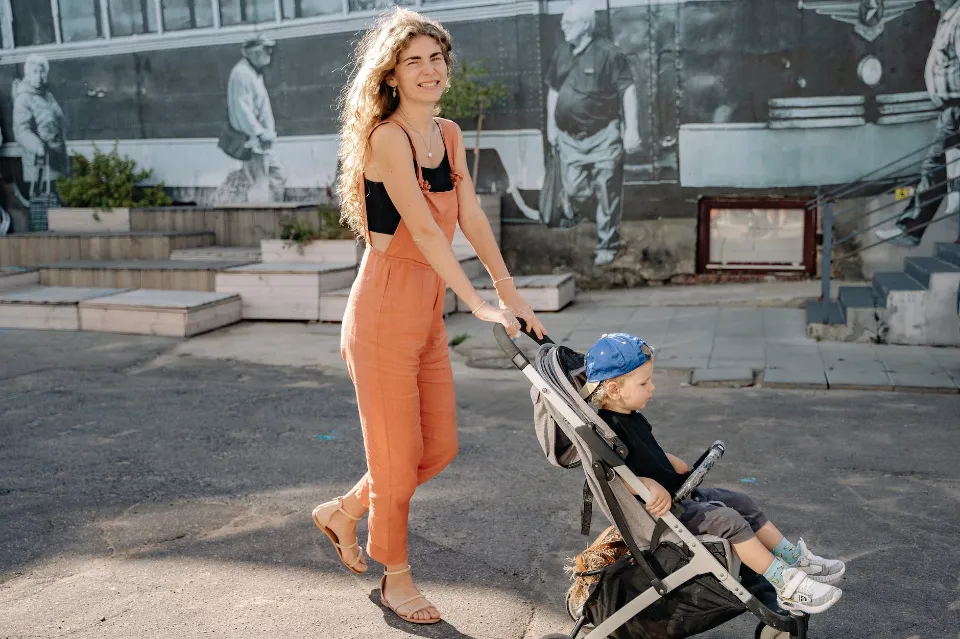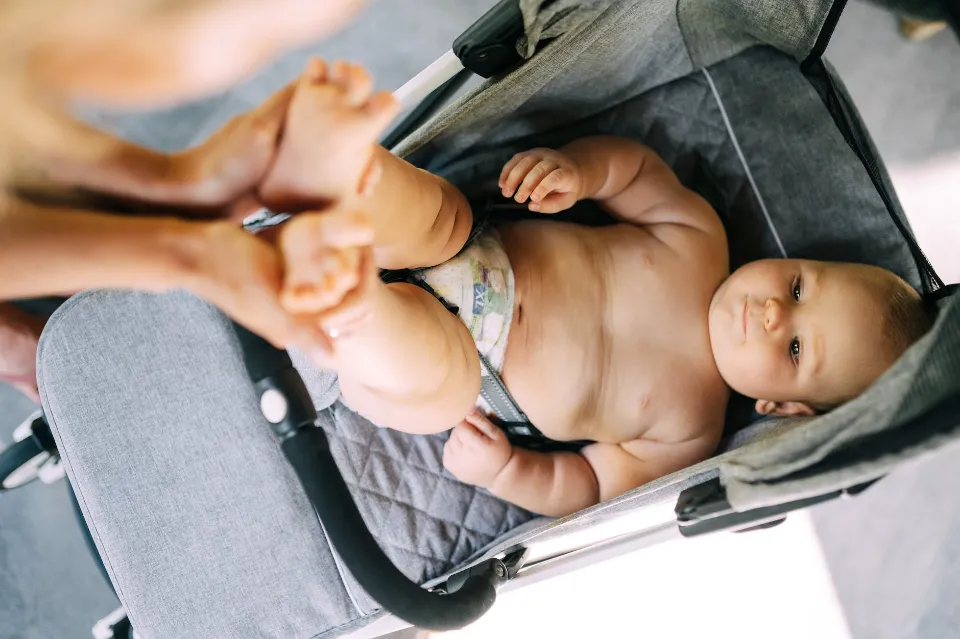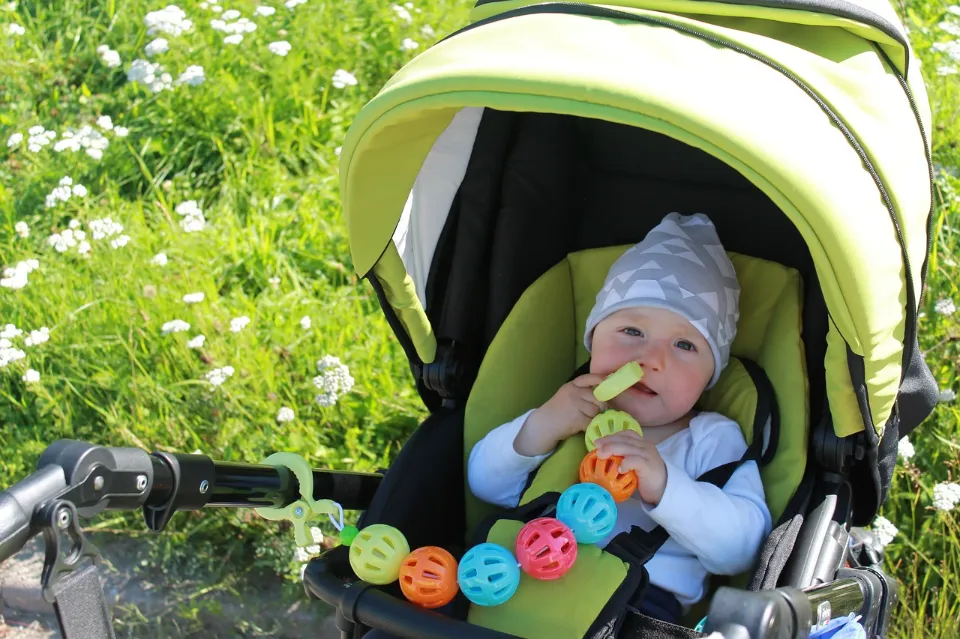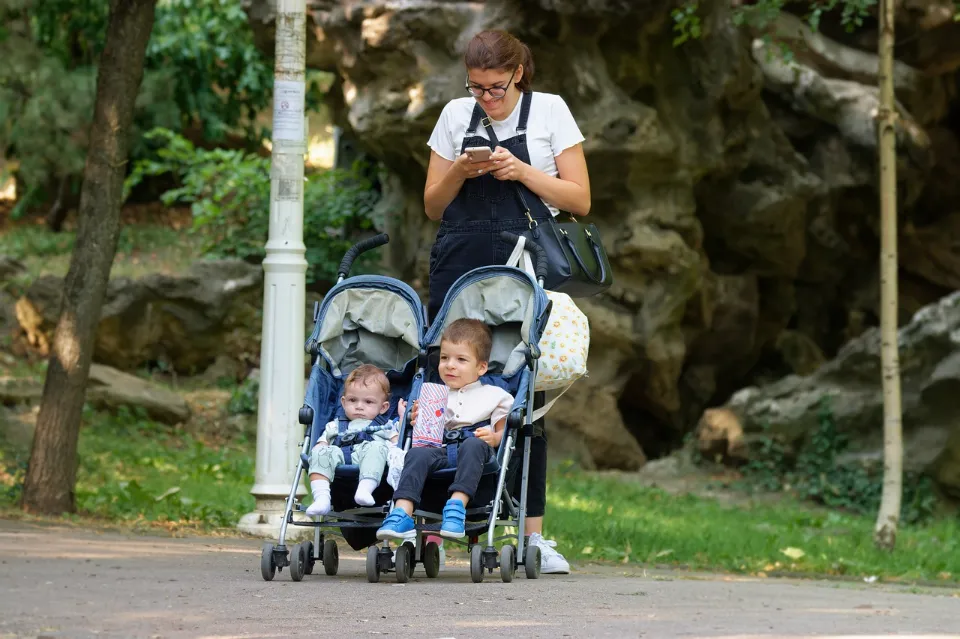
When Can My Baby Sit in Stroller – Exploring the Right Time
You might start to wonder as your child gets older when it’s okay for them to ride in a stroller and take in the world from a different angle.
We’ll go over significant developmental milestones and safety issues in this article to help you decide when it’s appropriate for your child to ride in a stroller. To determine their readiness, we will talk about the progression of head control, independent sitting, and general physical stability.
For your child’s stroller experience to be safe and comfortable, we’ll also offer some helpful advice and guidelines. Let’s set out on this journey of discovery to determine the ideal time for your baby to take pleasure in stroller excursions.
When Can Babies Sit Up in a Stroller?

When your child can safely move from the car seat to the stroller seat doesn’t have a magic age associated with it. The transition from the infant seat or carriage mode to the stroller seat is primarily determined by size and developmental stage. Your baby should ride completely reclined for the first few months because their muscles are still growing.
When a baby can hold their head up without assistance, usually around three months old, we advise switching to the stroller seat in a reclined position. When the child can sit up by themselves, usually between five and seven months, you can switch to having them fully upright in the stroller seat.
To help your baby reach those milestones in the interim, it’s crucial to support the development of their gross motor skills.
When Can You Transition the Baby to a Regular Stroller Seat?
You can convert the stroller’s reclined seat to a seating position where your child can lift their head independently and maintain it upright for a brief period of time. To help your baby reach these milestones, it’s important to help them grow their gross motor skills.
What Type of Stroller Can a Newborn Use?

If you’ve ever held a baby, you know how important it is to support their head and neck since they are too weak to do so on their own. If their heads are not supported, newborns’ heads will flop because their neck muscles aren’t strong enough to hold them up. The majority of the time, newborn babies can only move their heads from side to side while their muscles are still developing. Because of this, newborns should only be transported in strollers where their neck is fully supported, such as a bassinet-equipped stroller, a fully reclined seat with a harness, or an infant car seat.
Read More: Should I Wake My Newborn to Feed at Night
What to Consider When Purchasing a Stroller
Even though you might be eager to buy a stroller, make sure it’s the right fit for you and your baby by taking some of the following factors into account first. This can help you narrow down your search for the ideal stroller for your child.
Age and Weight Limitations
Every stroller has a weight limit, and some have recommendations about when babies can safely support their own head and neck (and the age at which this usually occurs), which will help you decide if it’s appropriate for your child. It’s crucial to pick a stroller that either accepts an infant car seat, a bassinet, or a fully reclining seat with a harness if your baby is under six months old or lacks sufficient head or neck strength. To make it simple to switch from the car to the stroller with just a click, travel systems often include an infant car seat, base, and stroller.
Portability and Maneuverability

It’s crucial to think about maneuverability and portability because you’ll be taking your infant on lots of adventures. Heavy strollers might be challenging to fold and transport into confined spaces like restaurants or stores. A lightweight stroller is an ideal option if you know you’ll be climbing and descending stairs. A frame stroller is another lightweight option for everyday outings.
It is used with an infant car seat and enables you to quickly get your child in and out of the car without having to lug a fully loaded stroller around. If you’re out and about with both a newborn and a toddler or older child, a double stroller is also practical to use.
Wheels and Brakes
The wheels and parking brakes are a further crucial area to pay attention to. In spite of differences in design, all strollers must pass the same federal brake test. You can still choose from a variety of brake options. A hand-operated parking brake that is easy to use with open-toed shoes or foot pedal brakes that are practical when your hands are full are two options you might consider. You can put both to the test to see which performs the best.
Read More: How to Break In Running Shoes
Wheels are incorporated into various stroller types for specific purposes. For instance, some everyday strollers come with wheels and treaded tires that not only make for a smooth ride for your baby but also help to keep the stroller steady and safe. In order to handle different terrain, jogging strollers have larger rubber wheels, which you may notice if you venture off the beaten path. All things considered, it’s a good idea to pick a stroller with front wheels that can be locked straight, as this can be useful for trips to the doctor or the grocery store.
Your Overall Lifestyle

When choosing a stroller for your child, you should take your lifestyle into account. If you lead an active lifestyle, use public transportation frequently, or are always on the go, you should customize your stroller to suit your needs rather than the other way around. If you plan to buy a stroller, make sure it can easily fold up and fit in the back of your trunk or can handle any terrain you throw at it. Visit our blog on how to choose a stroller to learn more about the various advantages and conveniences each one has to offer. This will help you further in reducing your options.
How to Avoid Stroller Accidents
Following the manufacturer’s recommendations for the proper use of the stroller is the main way to avoid stroller accidents. Here are some additional safety tips:
The safety strap or harness should always be worn when your baby or young child is in a stroller. Falling out of a stroller or its car seat attachment could result in serious injury. Because infants fall “head first,” they may even sustain a skull fracture.
A stroller’s handles should only be used for pushing; they should not be used to hang or fasten anything else. By doing this, a weight imbalance is created that might lead to the stroller toppling over and causing a severe head injury. To carry any items you might need, many strollers have pockets or storage baskets.
The stroller shouldn’t roll unexpectedly during stops, so the brakes should always be engaged and locked. Always fold a stroller out of reach once the infant is out of it to avoid finger pinch injuries.
Final Thoughts
We hope you feel more informed about the stroller types you and your child will enjoy and when it’s time for them to sit up straight now that you know a little bit more about when your baby can sit in a stroller. Keep in mind that for your baby to use a stroller safely, they must have developed neck and muscle control. If you’re looking for more parenting advice, check out our blog. Happy strolling!





Average Rating